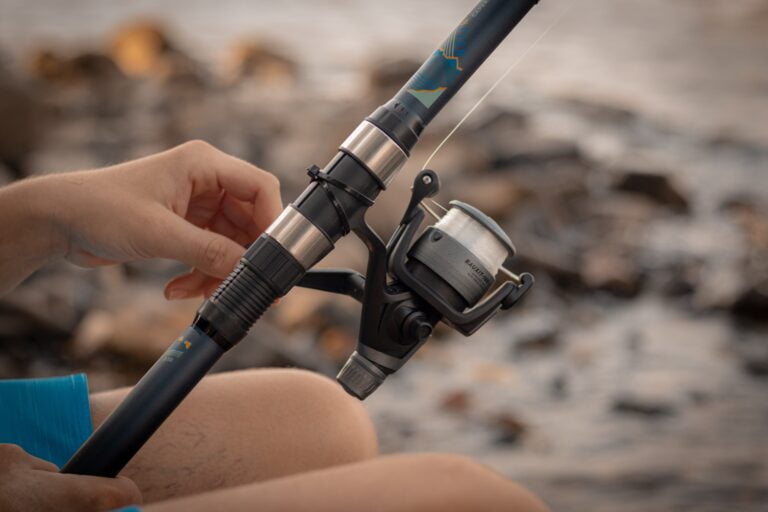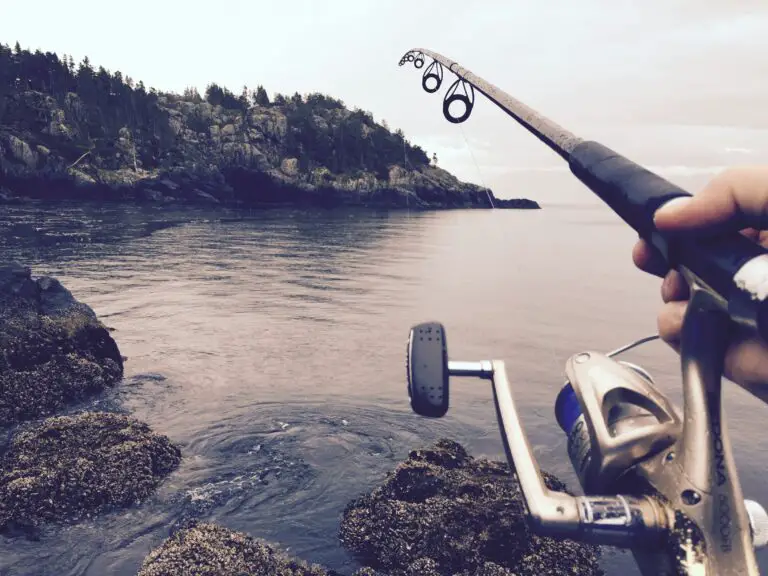Heavy vs. Medium-Heavy Rods Comprehensive Guide 2024

When it comes to making fishing selections, picking the proper rod can be one of the hardest choices I face. Especially when I’m in a price range,
I need to get the most price for my money, and it appears like there are countless elements to remember. A common question I frequently hear, in particular while focused on bass, is: “Should I pass for a medium rod or a medium-heavy rod?”
Heavy vs. Medium-Heavy Rods Comprehensive Guide 2024
Let’s dive into the variations among medium-heavy and heavy fishing rods.
In this newsletter, I’ll smash down what medium and medium-heavy suggest, how they carry out in practice, and what I have to think about while determining among them.
But if I want a quick solution: Medium and medium-heavy talk to the strength of a spinning rod. A medium rod is right for casting baits or weights as much as half an ounce, while a medium-heavy rod is better for something over 1/2 ounce. If I’m new to fishing and want a flexible rod, a medium-strength rod is generally the way to go.
That’s a simplified solution, although, and in fact, the species I’m targeting, the lures I use, and my specific fishing fashion all come into play. Let’s dive deeper into the information.
Medium-Heavy Rods:
Power and Sensitivity: Medium-heavy rods strike a balance between electricity and flexibility. They are versatile and appropriate for various fishing techniques.
Ideal Use: These rods are wonderful for medium-sized fish and might handle heavier lures. Use them for immediate-transferring “reaction” baits like buzzbaits, frog lures, and chatterbaits, in addition to heavier crankbaits, swimbaits, and jigs.
Recommended Situations: Fishing in water with moderate cover or weeds.
The St. Croix Victory Casting Rod is an amazing medium-heavy option.
Heavy Rods:
Power and Durability: Heavy rods are designed for maximum energy and stability. They excel at coping with larger fish species and heavy-duty packages.
Ideal Use: Use heavy rods for large sport fishing, deep-sea fishing, or while focused on huge predators.
Recommended Situations: Fishing in water with dense cowls or barriers.
While not mainly medium-heavy, the usual Marshal rod also gives robust performance.
Remember, the choice between medium-heavy and heavy rods depends on your fishing style, goal species, and the type of water you’ll be fishing in.
Understanding the Basics: Heavy vs. Medium-Heavy Rods
Although phrases like “medium” and “medium-heavy” may sound trustworthy, it’s vital for me to appreciate what they imply from a manufacturer’s attitude. This helps me realize precisely what I’m dealing with.
Both terms talk over a rod’s “electricity,” often referred to as its “backbone.” Power is the amount of pressure or weight required to bend the rod. A heavy rod wishes a great deal more weight to bend compared to an ultralight rod.
This differs from a rod’s “action,” which describes where the rod starts offevolved to bend when I upload weight to it.
Power rankings range from ultralight to greater heavy and past, but every rod is specific, or even rods with the equal energy rating can behave otherwise.
That’s why maximum producers additionally consist of strength information in phrases of line check and lure weight, generally published right at the rod.
For example, I love my Okuma Cerros rod, that’s rated as medium energy with “eight-17 lb, 1/8 ounces—five/eight ounces” specifications. In contrast, my Ugly Stik Elite medium-electricity rod is rated “6-14 lb, 1/four oz to 5/eight oz.
”The Ugly Stik doesn’t cast as nicely on the lighter stop, but with half an ounce, they carry out in addition. The variations are probably diffused, but fishing rods in the identical class can vary extensively in terms of weight scores.
Every power score has its place in special fishing situations. But for freshwater bass and walleye anglers like me, medium and medium-heavy rods are the most popular selections.
Heavy vs. Medium-Heavy Rods
Advantages of Heavy Rods:
Handling Larger Fish:
Heavy rods shine when targeting large species like musky, pike, or saltwater game fish. Their robust construction and power allow anglers to handle the increased resistance exerted by these formidable opponents.
Casting Heavy Lures:
Heavy-duty fishing enthusiasts should always use heavy rods. They can support heavier lures and give you the leverage you need to cast a long distance.
Power in Heavy Cover:
When fishing in dense cover, including under water structures or thick foliage, you need a pole that can quickly draw fish out of the water.Heavy rods excel in such scenarios, offering the muscle needed to navigate through obstacles.
What Is Rod Action?

Since this text specializes in strength ratings, I’ll hold the movement dialogue short. However, I need to understand that two medium rods with exceptional moves will carry out in another way, so understanding how rod action works is vital.
Rod motion describes where a rod begins to bend when weight is delivered. If rod strength is the “backbone,” then rod movement is the “sensitivity.”
Actions are categorized as rapid, moderate, or slow. The faster the action, the more sensitive the rod tip. A speedy movement tip is exquisite for flicking mild lures, detecting diffused bites, or minimizing movement with a deadstick presentation.
It enhances the power score, making motion every other important thing whilst deciding on a rod.
Medium vs. Medium-Heavy: Choosing with the Aid of Lure Weight
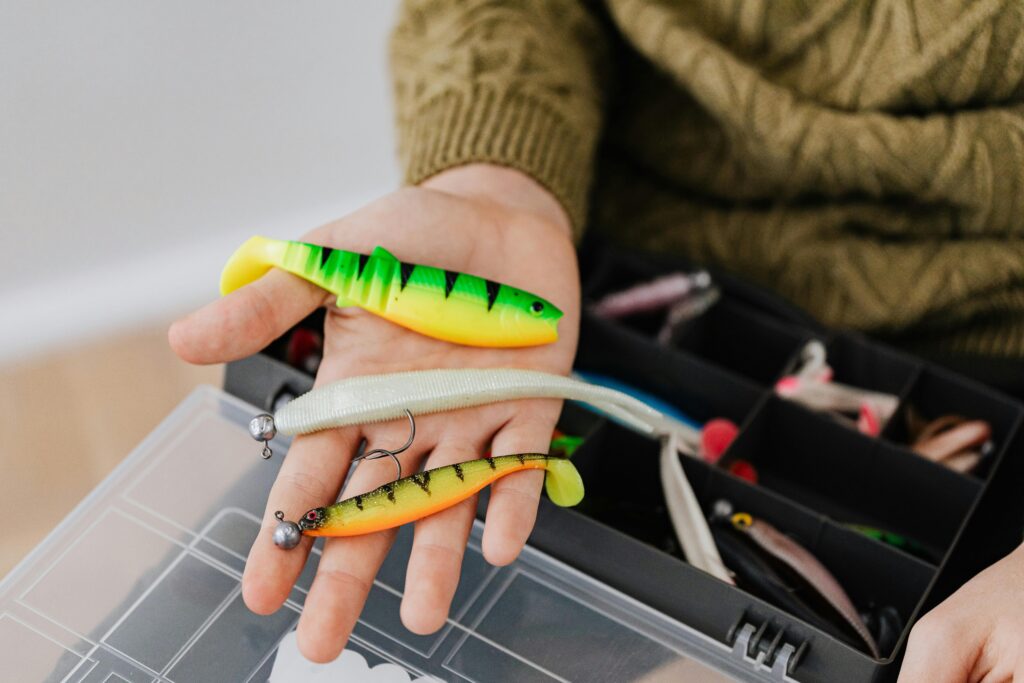
Since strength is set by how much weight it takes to bend a rod, it makes sense for me to select my rod’s electricity primarily based on the entice weights I plan to use.
Most medium rods handle weights as much as 5/eight ounces, whilst medium-heavy rods can manage weights as much as round an oz. Generally, medium rods carry out fine with lures weighing half an ounce or less, while medium-heavy rods excel with weights over half an ounce.
As an angler, I don’t keep on with simply one trap weight. I want to conform to situations, and I might not have the finances for more than one rod. So, if I’m torn among the two, I typically go together with a medium-electricity rod first.
Here’s why: In traditional bass, walleye, or even pike fishing, I do not often want the more capacity at the high cease, and most of my lures weigh half an ounce or much less. If I want to move heavier, a medium rod can usually manage it, so long as I’m careful with my casts.
But medium rods considerably outperform medium-heavy rods once I’m the use of weights round 1/4 ounce or much less.
I frequently find myself using light rigs like weightless wacky worms, mild frogs, and neko rigs, all of which might be satisfactory fished with a medium rod. Yet, that identical rod can still cope with larger swimbaits correctly.
The Mechanics of Casting
When I say “outperform,” I’m speaking approximately casting distance and accuracy.
Casting a trap isn’t like throwing a baseball, where arm strength propels the ball ahead. It’s more like a slingshot, where I use the rod’s flex to shop electricity for the duration of the solid.
When I launch the lure, that strength is unleashed unexpectedly, permitting me to solidify a good deal farther than I may want to by way of throwing by myself.
The distance I can forged relies absolutely on that flex. If my entice is simply too light to bend the rod, I may as well properly throw it. On the other hand, if the trap is simply too heavy,
The rod stops being a powerful spring because it doesn’t have sufficient backbone to propel the trap ahead on the give-up of the forged.
That’s why the medium vs. medium-heavy debate is so vital. I’ve determined that even if I’m using rigs weighing as much as an ounce, a medium-energy rod has enough backbone to cast efficiently.
But it also hundreds up and casts well with baits as mild as 1/16 ounce, and the greater flex inside the mid-variety (three/8 oz – half oz.) offers me better manipulation and accuracy as compared to a medium-heavy rod with the equal weight.
While entice weight is the primary thing in choosing between medium and medium-heavy rods, there is more than one other matter I remember as well.
How Rod Power Affects Hooksets
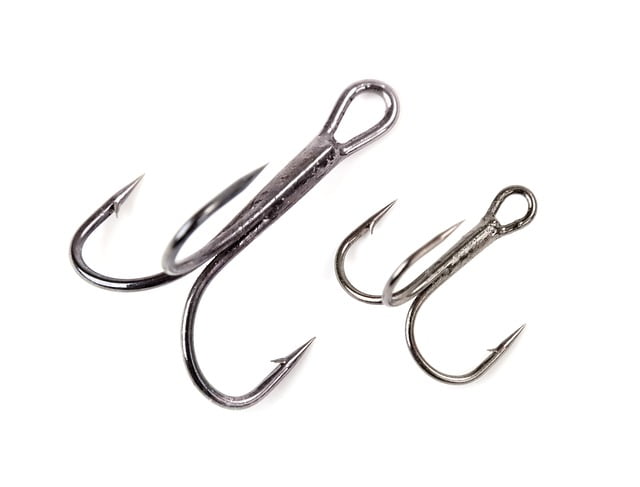
Rod strength plays a huge function in a hit hookset. The extra weight it takes to bend the rod, the extra pressure receives transferred to the hook.
When strong hooksets are vital, like with single hook rigs, a medium-heavy rod performs better. This is particularly true with weedless setups or while soft plastics disguise the hook.
These rigs frequently leave some slack in the line, and the hook faces more resistance before it is able to penetrate the fish.
However, when I’m using crankbaits, spinners, or whatever with treble hooks, a medium rod is the higher choice. A tough hookset with those lures can tear through a fish’s mouth, potentially injuring it and dropping the capture.
The nice approach here is to reel down and apply constant strain because the entice’s movement will usually hook the fish for me. A medium rod makes applying steady strain clean because it’s already partly loaded as I reel.
Species also come into play. Walleye, as an instance, have sensitive mouths that can be damaged by using competitive hooksets and normally most effective require a short wrist snap or regular strain.
On the other hand, northern pike have difficult mouths that demand powerful hooksets. Bass are somewhere in between; their mouths are smooth to pierce, however strong enough to deal with a forceful hookset.
Despite this, I nevertheless consider a medium-strength rod to be the excellent preference for maximum conditions. I can usually reel down and swing tougher for extra pressure, but a medium-heavy rod frequently requires too much precision for sensitive fish like walleye and is overkill for smaller species like crappie.
Rod Power and Fish Size
While casting overall performance is the primary attention while selecting a rod’s power, the size of the fish I’m targeting additionally matters. When it involves struggling with a fish like bass, medium-power rods are usually a more secure bet.
The key to fighting a fish is maintaining steady anxiety on the line, which maintains the hook securely in the area. If the line is going slack, even briefly, the fish can effortlessly get away.
A rod that bends more easily facilitates preserving tension because it acts like a spring, storing energy. If the fish all of a sudden changes route, a medium rod will take in the trade even as retaining the road taut.
In comparison, a medium-heavy rod that doesn’t bend easily might straighten out too speedy, inflicting the line to slacken and risking a lost fish.
That doesn’t imply medium rods are continually higher; however, for maximum freshwater fishing, I think they offer a higher stability. If I’m going after big species like giant pike, walleye, or muskies, a medium-heavy rod might be more appropriate.
How Rod Power Affects Presentation
Lastly, I need to keep in mind how a rod’s electricity impacts trap presentation. While it’s a minor issue, it’s still worth listening to.
When I jig with a medium-heavy rod, greater force is straight away transferred to the road, making the trap move quickly. A medium rod, then again, allows for slower, more diffused movements.
Different strategies paint higher with one or the other. For example, topwater frogs need to be “popped” to create their function on foot motion, which is less complicated with a medium-heavy rod that transfers force quickly. However, speedy-motion rods can soften this effect slightly.
Drop-shot fishing, which requires minimal movement, benefits from a medium rod that doesn’t purposefully entice movements. When fishing with a tender plastic on a jighead, either rod can paint nicely depending on my goal.
While this consideration is more applicable to anglers with a couple of rods, it’s nevertheless something I consider when at the water. And another time, a medium rod has a tendency to be extra flexible than a medium-heavy rod.
Advantages of Medium-Heavy Rods
Versatility: Medium-heavy rods can be used for a wide range of fishing approaches because of its exceptional versatility. These rods are versatile enough to fit into many fishing methods, whether you’re power or finesse fishing.
Sensitivity
Medium-heavy rods provide more sensitivity, which is appreciated by anglers. This heightened responsiveness allows for better detection of subtle bites and enhances overall fishing finesse, especially in situations where a delicate touch is essential.
Balanced Performance
Providing a harmonious fusion of potency and pliancy, rods of medium-heavy classification stand out as a superb option for anglers seeking a versatile rod. Whether engaged in jigging or worming pursuits, these rods offer an adept combination of resilience and receptivity, delivering an optimal balance of strength and finesse.
Choosing the Right Rod for You
Consider Your Target Species
Assess the primary species you intend to catch. If you’re targeting larger game fish, a heavy rod might be more suitable. For a more diverse range of fishing, a medium-weight rod offers versatility.
Evaluate Your Preferred Techniques
Different fishing techniques demand specific rod characteristics. Whether you prefer finesse fishing, flipping, or casting heavy lures, align your rod choice with your preferred methods.
Balance and Comfort
Take into account the comprehensive equilibrium and ergonomic design of the rod. A rod that exudes comfort during prolonged usage significantly elevates your overall fishing experience, contributing to an enhanced and gratifying fishing experience.
Conclusion Heavy vs. Medium-Heavy Rods
In the ongoing discourse surrounding the comparison between robust and moderately robust fishing rods, there exists no universal solution. The optimal selection hinges upon individual inclinations, the targeted aquatic species, and angling methodologies.
By comprehending the subtleties inherent in each category, one can arrive at a judgmental decision that harmonizes with their angling proclivities. Whether one gravitates towards the sinew of a robust rod or the adaptability of a moderately robust counterpart, the crux lies in attaining an optimal equilibrium for a fruitful and gratifying fishing expedition.
Medium Fast Rod: A Comprehensive Guide

In the difficult international of fishing, choosing the proper fishing rod is pivotal to at least one’s angling achievement. Among the numerous options available, the medium-speedy rod stands proud as a versatile desire that caters to various fishing patterns.
In this comprehensive guide, we are able to discover the nuances of the medium-speedy rod, delving into its tendencies, programs, and why it’s a preferred alternative for plenty anglers. By the end of this adventure, you will have a profound knowledge of the medium-fast rod and how it could increase your fishing enjoyment.
Understanding the Medium-Fast Rod:
1. Defining Medium-Fast Action:What is medium rod power?
The time period “action” in fishing rod nomenclature refers back to the factor on the rod in which it flexes the maximum at some point of casting. A medium-speedy rod strikes a balance between flexibility and stiffness. It bends extra in the top 1/2, bearing in mind a faster recovery compared to slower action rods. This dynamic makes the medium-speedy rod a versatile device suitable for various fishing techniques.
Characteristics of a Medium-Fast Rod
Flexibility and Sensitivity: The moderate flex in the top 1/2 affords sensitivity, permitting anglers to feel diffused bites and movements inside the water.
Versatility: Medium-speedy rods are adaptable to distinctive fishing eventualities, making them appropriate for numerous species and environments.
Accuracy in Casting: The slight action enables correct casting, particularly in situations where precision is important.
Balanced Power: Medium-rapid rods offer a balanced electricity profile, offering the electricity needed to handle numerous fish sizes.
Applications of the Medium-Fast Rod
Freshwater Fishing: How Do I Choose a Rod Power?
Bass Fishing: The medium-rapid rod is an amazing preference for bass fishing. Its sensitivity aids in detecting sensitive bites, at the same time as the balanced power allows for effective hook sets.
Trout Fishing: In streams and rivers, where accuracy is crucial, the medium-rapid rod shines. It handles diverse trout fishing techniques, from casting lures to supplying stay bait.
Saltwater Fishing: Is a medium-heavy rod good for saltwater?
Inshore Fishing For inshore species like reddish and speckled trout, a medium-speedy rod offers the vital sensitivity for detecting strikes in various environments.
Light Saltwater Applications: In light saltwater situations, including apartment fishing, the medium-speedy rod is versatile enough to address the challenges posed by special species.
Multi-Species Angling:
Pan fishing: The sensitivity of the medium-fast rod makes it a favourite for panfishing, in which detecting subtle bites is vital for success.
Walleye Fishing: When concentrated on walleye, the accuracy and versatility of the medium-fast rod make it an exceptional choice for diverse techniques, along with jigging and trolling.
Choosing the Right Medium-Fast Rod
Rod Length: What size rod is best?
Shorter Rods (6-7 ft): Ideal for limited spaces or conditions requiring specific casting, including fishing around structures or flora.
Longer Rods (7-8 feet): Provide improved casting distance and leverage, suitable for open water scenarios or where longer casts are important.
Rod Power:
Medium-Power: Versatile for a huge range of fishing scenarios, making it a go-to choice for lots of anglers.
Medium-Heavy Power: Offers expanded power, appropriate for dealing with larger fish or fishing in heavier cowl.
Material and Construction:
Graphite: Provides sensitivity and a light-weight feel, making it a popular preference for many medium-fast rods.
Fiberglass offers sturdiness and flexibility, making it forgiving for beginners and suitable for certain fishing styles.
Conclusion: medium-fast Fast Rod
The medium-speedy rod stands as a testimony to the evolution of fishing gear, imparting anglers a versatile and effective tool for diverse fishing situations. Whether you’re casting for bass in freshwater or targeting inshore species in saltwater, the medium-speedy rod’s stability of sensitivity and electricity makes it a dependable desire for anglers of all talent tiers. As you embark for your fishing adventures, take into account the versatility and adaptability that the medium-rapid rod brings to the table, and watch because it enhances your angling experience.
Medium vs Medium Heavy Rod Saltwater
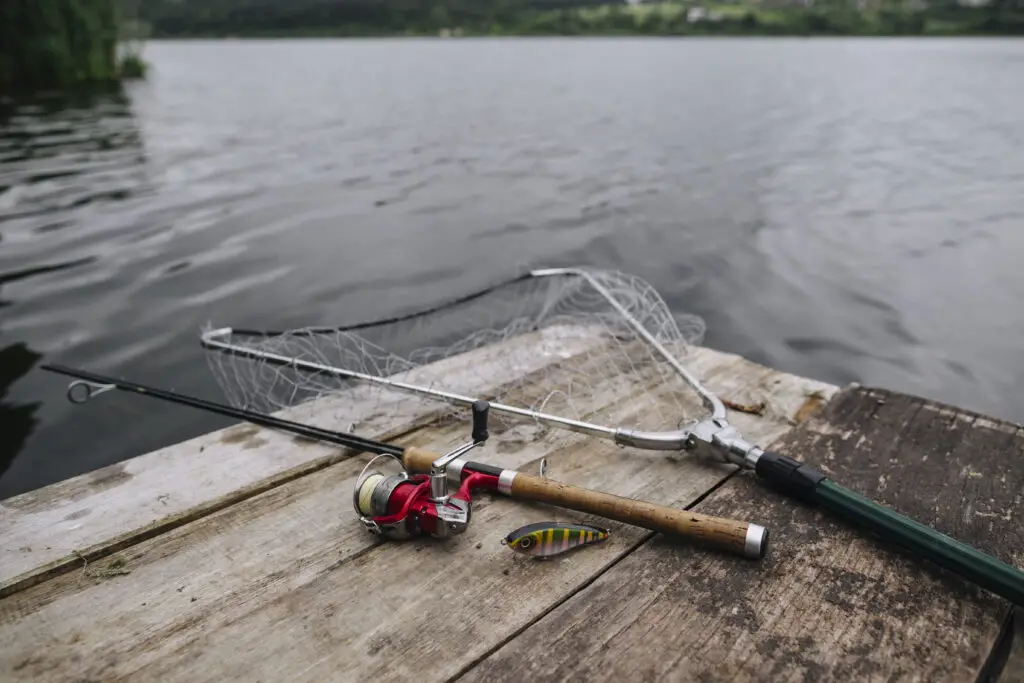
Choosing the Right Rod for Your Saltwater Adventures
Ready to dive into the salty global of fishing rods and settle the age.
vintage debate of medium vs. medium-heavy? Whether you are seasoned or simply dipping your feet into the saltwater scene, we have given you the lowdown on those fishing essentials.
So grab your favored beverage, chill, and permit’s reel in some knowledge!
Medium Rods: The Middle Ground Marvels:
What’s the Buzz About Medium Rods?
When it comes to fishing in saltwater, medium rods are the Goldilocks of the ocean—no longer too heavy, no longer too mild, just proper. These flexible rods are just like the Swiss Army knife of fishing tools, excelling in a variety of conditions. Here’s why they’re the go-to for many anglers:
Flexibility at Its Finest: Medium rods provide a balanced combo of electricity and sensitivity. This approach you could experience that diffused nibble from the craftiest fish while having enough backbone to battle inside the massive ones.
Casting Comfort: Whether you’re casting lures or bait, medium rods offer a snug center floor. They’re forgiving enough for novices and provide sufficient strength for skilled anglers.
The Lighter Side of Medium Rods
Let’s damage it down further
Species Showcase: Medium rods are your all-access bypass to a number of saltwater species. From snook to redfish, they can deal with the numerous challenges of different fishing environment
Lure Love: If you’re a fan of using a mixture of lures, medium rods are your great pals. They cope with the whole lot from light-weight plastics to mid-sized plugs with finesse.
Medium-Heavy Rods—The Brawny Behemoths:
Medium-Heavy When Size Matters
Alright, buckle up, because we are venturing into the heavy-obligation territory of medium-heavy rods. Think of these horrific boys as the Arnold Schwarzenegger of the fishing rod international: muscular, powerful, and ready to pump some iron.
Hefty Hooksets: When you are coping with bigger fish that require a chunk extra oomph, medium-heavy rods step as much as the plate. The greater backbone lets in for stable hooksets, ensuring your trap stays on the road.
Tussling with Titans: Want to address a few severe brutes like tarpon or tuna? Medium-heavy rods provide the necessary spine to engage in epic battles with those oceanic titans.
Heavy Metal
Let’s delve into the specifics:
Heavy-Duty Handling: Medium-heavy rods are the weapon of desire for heavy-duty programs. If you are fishing in hard situations or focused on larger species, those rods can cope with the venture.
Lure Limitations: While medium-heavy rods excel with heavier lures, they will sense a chunky clunky with lightweight alternatives. Keep this in mind if you experience the finesse of finesse fishing.
Making the Decision
Decisions: Choosing Your Fishing Sidekick
Now that we’ve got laid out the strengths of each medium and medium-heavy rods, it is decision time. Consider the following factors whilst making your desire:
Target Species: Are you aiming for the huge guns or sticking with the mid-sized players? Tailor your rod choice to the fish you’re hunting.
Fishing Environment: Consider where you will be casting your line. Inshore, nearshore, or offshore—everything comes with its own precise challenges that may affect your rod desire.
Personal Preferences: What feels right to your fingers? Give one-of-a-kind rods a look if possible to see which one aligns with your casting style and normal fishing enjoyment.
Conclusion Medium vs Medium Heavy Rod Saltwater
And there you’ve got it, fellow anglers the epic war among medium and medium-heavy rods. Whichever facet you pick out, recall that fishing is about more than simply the trap; it is about the joys, the tales, and the camaraderie. So, grasp your rod, hit the water, and may your next fishing adventure be full of tight strains and tall memories!
FAQs
Can Heavy Rods be Used for Lighter Fishing Styles?
Absolutely, Heavy Rods can be versatile if matched with the right line and lure. Adjusting the setup allows anglers to explore a broader range of fishing styles.
Are Medium-Heavy Rods Suitable for Beginners?
Indeed, medium-heavy rods are beginner-friendly due to their versatility. They offer a forgiving learning curve while allowing room for anglers to progress in their skills.
Can medium-heavy rods handle saltwater fishing?
Certainly, medium-heavy rods are well-suited for saltwater adventures. Their robust construction makes them adept at tackling the challenges posed by saltwater species.
Do heavy rods fatigue anglers quickly?
Although heavy rods are heavier than other types, contemporary designs place an emphasis on ergonomic elements so that fishermen can fish for longer periods of time without experiencing undue weariness.
Are heavy rods limited to specific species?
Heavy rods excel at targeting larger species, but they are not limited to them. With proper technique and adjustments, they can be used for various fishing scenarios.
Can medium-heavy rods handle deep-sea fishing?
The necessary strength to tackle larger saltwater species found in deeper areas makes medium-heavy rods an excellent choice for deep-sea fishing.





